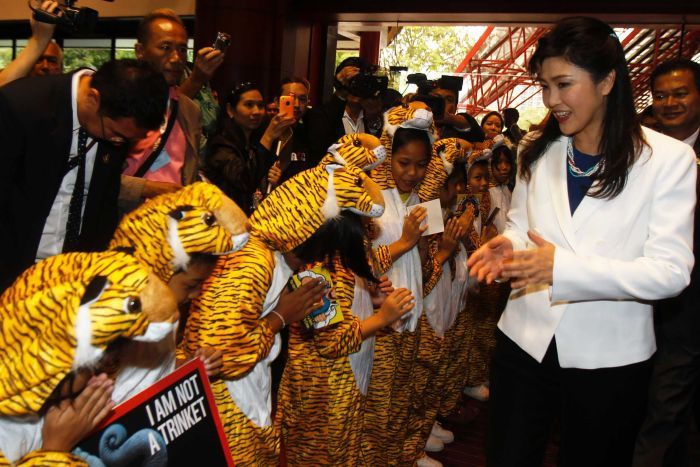Once every three years the world’s conservationists, animal activists, and governmental environment ministries meet to lobby the fate of the most endangered species on the planet. CITES (Convention on International Trade in Endangered Species of Wild Fauna and Flora) has just wrapped up its summit in Bangkok, Thailand – a country in the splash-zone of one of the worst surges in the global illegal wildlife trafficking in modern times.

Thailand is a transit hotspot – porous borders and pliable officials make it easier to launder wild animals and illegal wildlife products from elsewhere (like tigers and rare, poisonous snakes from Asia or turtles from Indonesia) to destination countries like Vietnam and, ultimately, China. It’s a brutally devastating trade… wildlife products include tiger and lion bones, whole or cut into chunks, even powdered; the sawed-off hands of endangered mountain gorillas; skins of rare monkeys and lizards; spiders squeezed into straws; and, of course, elephant tusk and rhino horn… all savagely removed after the animals were either shot to death or hacked to pieces and left to bleed to death. The surge demand for these illegal pieces of wildlife has catapulted into becoming one of the biggest black-market trades today.
Individual governments are running the gamut with well-resourced criminal syndicates, a raging war where the rules are constantly being redefined. And at the center of the maelstrom is CITES, the body charged with regulating the trade, but has been undermined and sometimes flat-out ignored at almost every turn.
The stakes have never been higher for CITES…essentially, RIO+20 last year drew attention to the fact that CITES was in danger of being considered toothless. Ergo officials at the Bangkok conference have promised to buoy CITES prominence, adopting some cherry-picked plans-of-action around wildlife protection that they vow will see results before the next conference in South Africa in 2016.


- HIDDEN IN PLAIN SIGHT
55 proposals were accepted, 9 rejected, six withdrawn; here are the highlights:
- 5 commercially valuable shark species were adopted (meaning that despite the Oceanic Whitetip shark, the Scalloped Hammerhead, the Great Hammerhead, the Smooth Hammerhead, and the Porbeagle shark being harvested in massive numbers for the fins and meat by commercial industries, they are now protected under the endangered species trade regulations, much to the chagrin of several officials benefiting from the trade)
- Manta ray species are also on the list… Mantas are the slowest reproducing marine animal so the numbers were low to begin with but the popularity of their gill plates on the international black market is fast driving them towards the extinction list
- The ‘rules of game’ for the elephant trade were thoroughly revised and a suite of actions targeting the countries at the heart of the ivory trade have been adopted
- A range of strategies aimed at curbing rhino poaching were adopted – though these, much like the actions for elephant conservation, are largely theoretical so I won’t mention them.
- Big cats: agreements were adopted, but face many of the same problems as rhinos and elephants.
Action plans around ivory and rhino horn are intellectual… meaning they are well thought out and make sense on paper but it has yet to measure any practical success, especially when they are up against ruthless criminal syndicates that operate more like drug cartels than traditional poachers. While this red tape wrangling is essential in conservation it may not yield the desired results and governments may have to take different, if not more drastic action to save their wildlife.
Another, if not the most disappointing oversight of CITES 2013 was the failure to protect the polar bear… species preservation losing to commercial incentives yet again.
